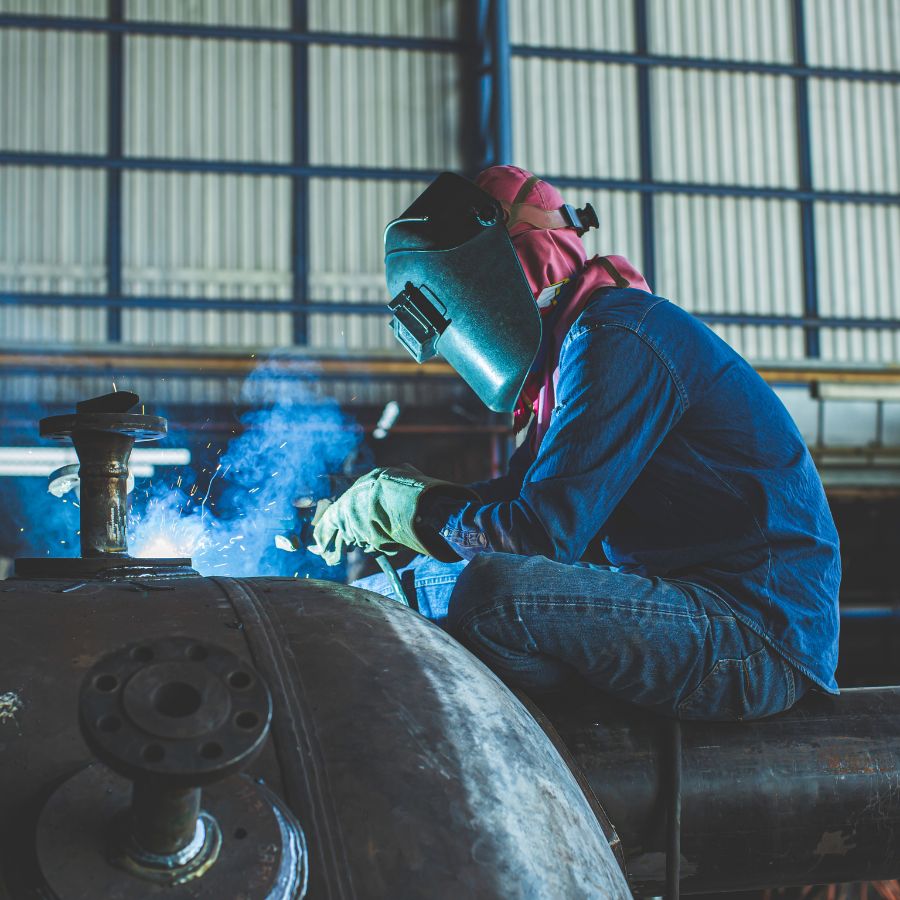In modern home construction, structural strength is no longer just a technical term—it’s a priority. As homeowners demand open-plan living, multi-storey designs, and long-term durability, traditional building materials like timber often struggle to keep up. This is where residential steel fabricators play a crucial role.
Steel has quickly become a preferred material for building stronger, safer, and more resilient homes. Through precision engineering, custom fabrication, and advanced installation techniques, steel fabricators significantly enhance the load-bearing capacity and overall stability of residential structures.
In this article, we explore how steel fabricators boost structural strength, when you should hire them, and why their services are becoming essential for modern homeowners.
Residential steel fabricators are specialists who design, cut, weld, and install steel components used in home construction. Unlike general welders or builders, these professionals work specifically with structural-grade steel products such as beams, columns, brackets, stair frames, trusses, and reinforcements.
Their expertise ensures that every steel component meets engineering specifications, building codes, and performance standards. Whether it’s a new build, renovation, or structural upgrade, their work forms the backbone of a strong and stable home.
- Custom steel beam and column fabrication
- Structural reinforcements for floors and roofs
- Metal staircases and balustrades
- Brackets, frames, and load-bearing components
- On-site welding and steel installation
- Engineering compliance and certification
Today’s homes face a wide range of environmental and structural pressures. As designs evolve and modern living demands greater flexibility, having a strong foundation and support system has become critical.
Homes now incorporate heavier roofing materials, double-storey extensions, large windows, and load-bearing beams that require high-strength support. Steel provides the load capacity needed to prevent sagging, cracking, and long-term structural issues.
Weather conditions, soil movement, moisture, and termites can all weaken traditional materials. Steel’s resistance to pests, fire, and water damage makes it an ideal solution for longevity.
A strong home isn’t just built to last—it’s built to protect. Steel reinforcement ensures structural integrity during storms, heavy loads, and everyday wear.
This is the heart of the topic. Here’s how expert steel fabrication directly boosts your home’s durability and stability.
Steel beams offer unmatched load-bearing strength compared to timber. Fabricators cut and shape steel with millimetre-level accuracy, ensuring your home efficiently distributes weight throughout its frame.
Benefits include:
- No warping or shrinking
- Higher resistance to bending and cracking
- Superior support for heavy loads
- Consistency in performance over decades
Open-plan homes require wide, unobstructed spaces. Steel allows for long spans without needing multiple load-bearing walls.
Fabricators design custom beams and posts that safely hold upper floors or roofing systems while maintaining open, airy interiors.
Steel posts, braces, and bearers greatly strengthen homes built on sloping blocks or reactive soils. These supports maintain the home’s alignment, reducing long-term structural movement.
Steel trusses and beams distribute roof weight evenly and resist pressure caused by high winds. In multi-level homes, fabricated columns keep second-storey floors stable and safe.
Expert welders use techniques like MIG/TIG welding and bolted connections to create ultra-strong joints. These connections are crucial for ensuring structural panels, beams, and frames stay secure under stress.
Fabricators often galvanize, paint, or powder-coat steel to prevent corrosion. With proper treatment, steel components can last 50–100 years or more.
Steel performs exceptionally well in high temperatures and is non-combustible. In bushfire-prone areas, steel reinforcements dramatically increase home safety.
Every steel component is created based on certified engineering drawings. This ensures the structure meets strict safety standards and passes inspections without issues.
You don’t have to be building a brand-new home to benefit from steel. Here are some ideal situations to contact a steel fabrication expert:
Adding a second floor, knocking out walls for open plan living, or upgrading load-bearing structures requires steel reinforcement.
Termite damage, sagging floors, failing timber beams, or cracked supports often need replacement with steel components.
Custom staircases, balconies, pergolas, and façade elements are best made from precision-fabricated steel.
Many homeowners now include steel in the initial design stage for increased strength and long-term stability.
A skilled fabricator adds tremendous value to any construction project. Some top benefits include:
Every steel section is designed specifically for your home’s layout, loads, and purpose.
Pre-fabricated steel components speed up on-site installation and reduce downtime.
Steel’s durability reduces ongoing repair and maintenance costs.
Homes with steel structural elements often offer better longevity and stronger resale appeal.
Certified steel ensures load-bearing requirements are met without compromise.
Understanding the process helps homeowners plan their project effectively.
Fabricators review your home’s design, load requirements, extension plans, or problem areas.
3D models and shop drawings are created to map exact steel dimensions and load specifications.
Steel is cut, welded, drilled, and shaped using advanced equipment.
Cranes and skilled technicians install the steel components with precision.
Engineers confirm the installation meets safety and structural standards.
Several variables influence the overall cost of steel fabrication:
- Type and grade of steel
- Size and complexity of your project
- On-site installation labour
- Surface treatments like galvanising or powder coating
- Engineering and certification fees
Although steel can cost more initially than timber, its long lifespan and minimal maintenance make it a cost-effective investment.
Residential steel fabricators play an essential role in strengthening modern homes. Whether you’re building from scratch or upgrading an existing structure, steel offers unmatched durability, safety, and long-term value. From custom beams and columns to reinforced foundations and fire-resistant materials, steel fabricators ensure your home remains stable, secure, and future-ready.
If you’re planning renovations, extensions, or structural upgrades, consulting a professional steel fabricator is one of the best decisions you can make for your property’s longevity.
They design, manufacture, and install steel beams, frames, posts, staircases, and reinforcements to strengthen residential structures.
Yes. Steel is stronger, more durable, resistant to pests, and holds its shape better over time.
Absolutely. Steel is ideal for open-plan renovations, second-storey extensions, and replacing weak or damaged supports.
Yes. Steel provides better fire resistance, higher load capacity, and long-term structural reliability.
While upfront costs may be higher than timber, steel’s lifespan and minimal maintenance make it more cost-effective long-term.
Yes. They collaborate directly with architects, engineers, and builders to ensure precise installation and compliance.
Small projects may take a few days, while complex custom fabrication can take several weeks depending on design and site conditions.

